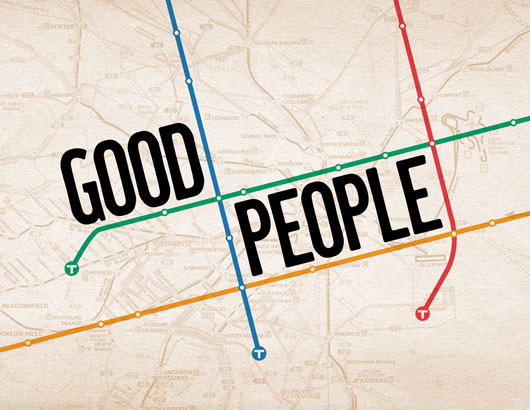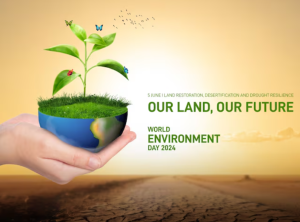Amid all the negative press and outrage stemming from it, stories of people who are working behind the scenes to make a difference, restore our faith in the country.
If “man bites dog” always made for great news, today there are a dozen subtexts to this. The religion of the man. The safety of the woman watching the incident. The fate of the children asked to write a report on it. The clout of the welfare agency supporting this canine being. The political leaning of the media organisation covering it.
There is bad news itself, and then there is the incessant reporting of bad news and the public furore it generates.
Sometimes, I open the newspaper in the morning, and within seconds, find myself longing for the vacuous comfort of Page 3. Links to horror stories that are regularly shared on social networking websites make me believe that we live in a terrible world indeed.
Expressing outrage is now a competitive sport and the done thing is to shake the head and wonder if things could get any worse.
Yet, all I have to do is look around to feel inundated with inspiring stories of people making a difference. Whether stemming from a personal trauma or just a need to give back to society, their work is what I can only describe as “happy making.”
Shirin Juwaley from Mumbai had acid thrown on her face by her husband when she sought a divorce. Over sixteen reconstructive surgeries later, Shirin found the ordeal of real life – being stared at and discriminated against – just as tough to bear. Today, she runs Palash, an organisation that counsels acid attack victims to help them regain self-esteem and find a livelihood.
In Hyderabad, Prajwala (www.prajwalaindia.com) has rescued over 10,000 women and children from sex traffickers. The founder Sunitha Krishnan, survived gang rape at the age of fifteen and went on to get a PhD in social work from Harvard University. And in the heart of Kerala, 24-year old Tiffany Brar takes school to the homes of those who are unable to attend school. Visually impaired herself, Tiffany has converted an autorickshaw into a mobile blind school called Jyothirgamaya, to teach others like her Braille, mobility skills and basic life skills.
When I first heard about The Kahani Project(www.thekahaniproject.org), I imagined a blind girl smiling as she listened to stories narrated by complete strangers. This project aims to harness the power of stories in making the lives of children – including the visually impaired – happier by crowdsourcing and distributing stories. In Goa, Child’s Play Foundation (www.childsplayindia.org) uses classical music to bring joy to the lives of underprivileged children. As a starting point, volunteers teach the violin, viola, cello and choir music to over 120 children.
One of my favourite stories comes from the North East, often neglected in larger discourses on India. In Assam’s most backward areas, ‘boat clinics’ (www.c-nes.org) deliver medical care in a region along the Brahmapatura, where over 2.5 million people live – marginalised, cut off from resources, and hit by floods on a regular basis. It began with a single boat, aptly named ‘Akha’ or ‘Hope’ in Assamese. Today, with fifteen ‘ships of hope’ plying in thirteen districts, the project has helped over twelve lakh people. From dispensing family planning advice to treating children with water borne diseases, these boat clinics do it all.
In Ganiyari, Chattisgarh, doctors from AIIMS who wanted to serve in rural India, have been running the Jan Swasthya Sahyog (JSS or “People’s Health Support Group”) for over fifteen years now. The JJS now covers 1,500 villages or over 800,000 people in dire need of medical help.
In all the din about the abysmal state of healthcare and brain drain of qualified medical professionals (all true), stories like these do not get the attention they deserve. Have you heard of Delhi-NCR’s Raahgiri Day Project (raahgiriday.com), a move to reclaim public spaces for
pedestrians? Or about Bangalore’s Daily Dump (www.dailydump.org), whose composting product has shown urban India a new way in waste segregation.
As I write this, all of North India is shivering under what television news channels are calling a ‘cold fury’. For over twenty years now, Anshu Gupta has been a one-man army fighting for the cause of ‘clothing for dignity’ through his organisation Goonj (www.goonj.org). Goonj’s RAHAT campaign stresses on the idea that winters are to be treated as disasters on par with earthquakes and floods.
Goonj also works in the area of menstruation (njpc.goonj.org), tackling taboos around it and creating cloth sanitary pads out of wastage. Anshu Gupta recently said in an interview to the BBC, “It is not a women’s issue. It’s a human issue but we have just isolated it. Some of us need to come out of this culture of shame and silence.”
And based in Coimbatore, Arunachalam Murganantham (newinventions.in) manufactures machines producing affordable sanitary napkins for the millions of women who use sand, dry grass and newspapers as cheaper options. He has rightly found a place in Time magazine’s list of ‘100 most influential people in the world 2014’.
There are enough people out there who stand out with their sanguine vision, in the face of the negativity spread by traditional and social media. There are institutions like Kanthari (www.kanthari.org) in Trivandrum, which mentor and empower potential social visionaries. And then there are others who document the good news: aggregator websites like Vikalp Sangam (vikalpsangam.org) and The Better India (www.thebetterindia.com).
Finally, I want to mention a stunning project that refuses to fit into any neat slot, the People’s Archive of Rural India (www.ruralindiaonline.org). If on a bleak day, you need a reason to smile, head to the website and listen to schoolchildren from Kerala sing the potato song.




